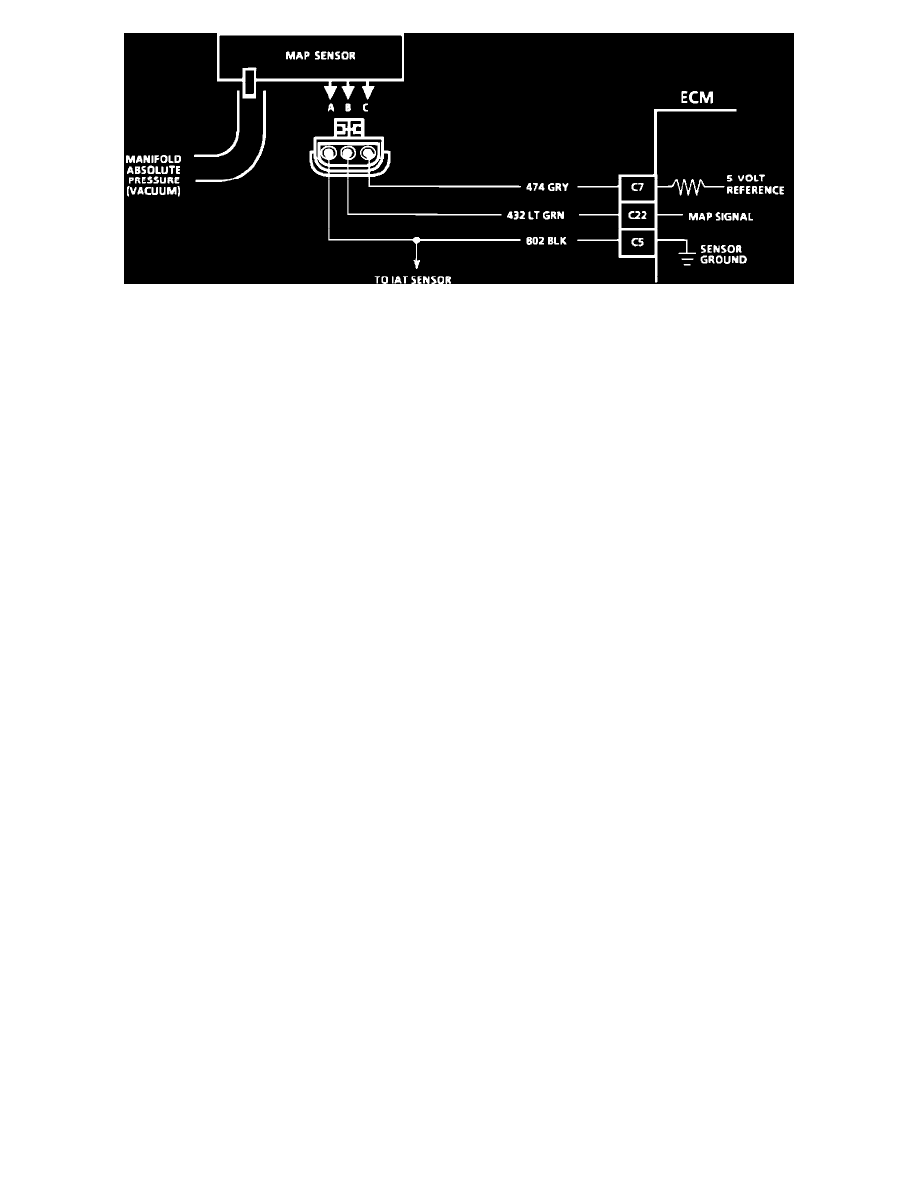Lumina L4-151 2.5L (1991)

Wiring Diagram For MAP
CIRCUIT DESCRIPTION:
The Manifold Absolute Pressure (MAP) sensor responds to changes in manifold pressure (vacuum). The ECM sends a five volt reference to the MAP
sensor. As manifold pressure changes, the output voltage of the sensor also changes. By monitoring the sensor output voltage, the ECM knows the
manifold pressure. A lower pressure output voltage will be approximately 1.0-2.0 volts at idle. Higher pressure output voltage will be approximately
4.0-4.8 volts at Wide Open Throttle (WOT). The MAP sensor is also used, under certain conditions, to measure barometric pressure. This allows the
ECM to make engine adjustments for different altitudes. The ECM uses the MAP sensor information to control fuel delivery and ignition timing.
TEST DESCRIPTION: The numbers below refer to circled numbers on the diagnostic chart.
1.
When comparing "Scan" readings to a known good vehicle, it is important to compare vehicles that use a MAP sensor having the same color insert
or having the same "Hot Stamped" number.
2.
Applying 34 kPa (10" Hg.) of vacuum to the MAP sensor should cause the voltage to change. The voltage value should be greater than 1.5 volts.
Upon applying vacuum to the sensor, the change in voltage should be instantaneous. A slow voltage change indicates a faulty sensor.
3.
Check vacuum hose to sensor for a leak or a restriction. Be sure that no other vacuum devices are connected to the MAP sensor hose.
4.
Disconnect sensor from the bracket and twist sensor by hand to check for an intermittent connection. Output changes greater than 0.10 volt
indicate a bad connector or connection. If OK, replace the sensor.
NOTE: Make sure electrical connector remains securely fastened, and the same diagnostic test equipment is used on all measurements.
